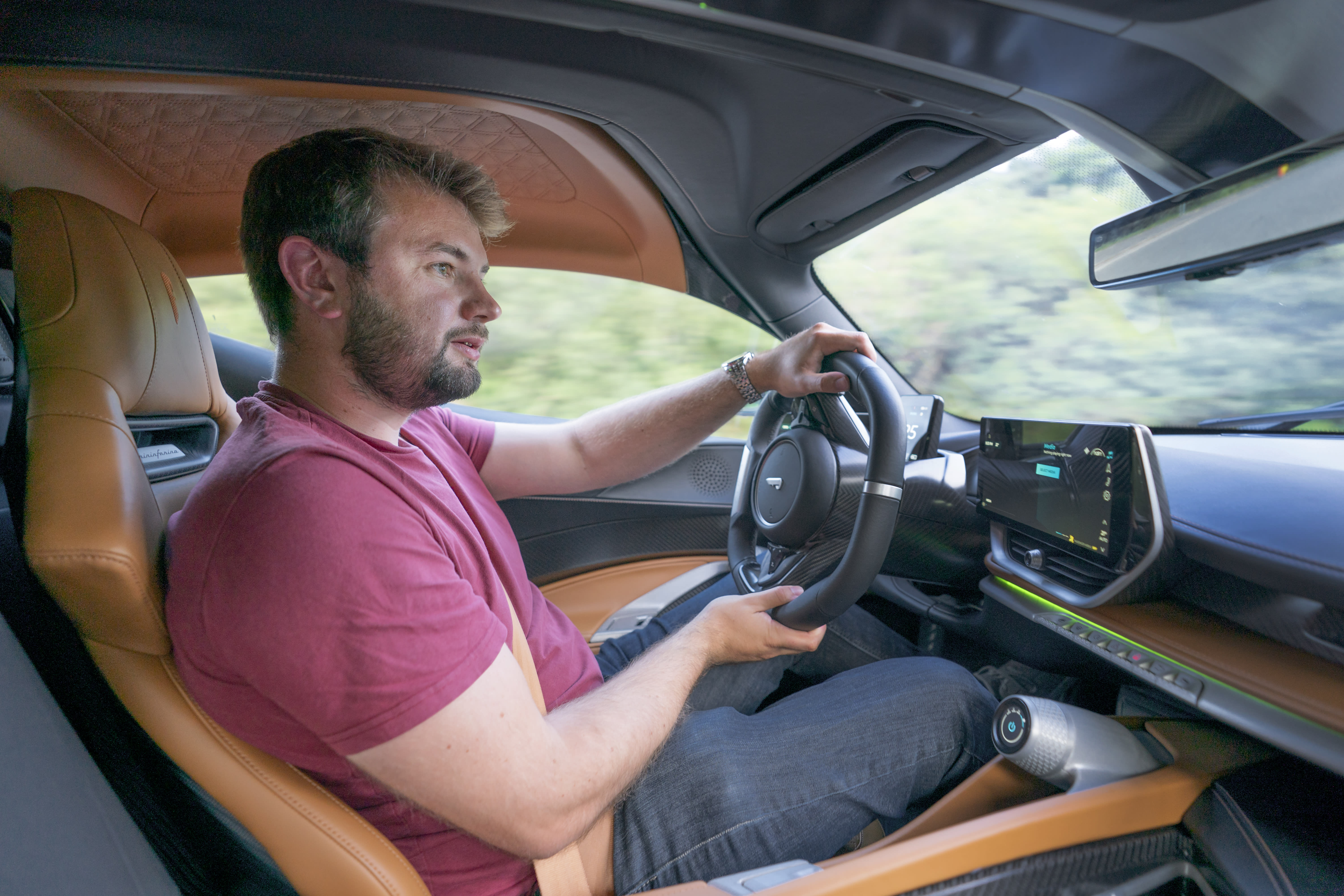
Porsche Cayenne (2023-) Review

Introduction
Whether you love it or hate it – and plenty of people fit into one of those camps – the Porsche Cayenne is a phenomenon. Along with the smaller Macan, it turned Porsche from a slightly nerdy German sports car maker into a huge luxury brand that builds cars to suit all manner of customers. And it has done so very successfully. In fact, it’s ahead of the 911 and the 718 Boxster in the race to be Porsche’s most popular new lease car.
And to help the Cayenne stay ahead of the curve, Porsche has updated it, subtly redesigning the exterior with a new nose and some clever lights (more on those later), as well as tweaking the engine range and revamping the cabin with fresh technology. It isn’t an all-new car, but with the Range Rover Sport taking a huge step forward and other rivals close behind, will that be enough to keep the Cayenne fresh? And is it still the best in the business?
Select's rating score* - 4.2 / 5
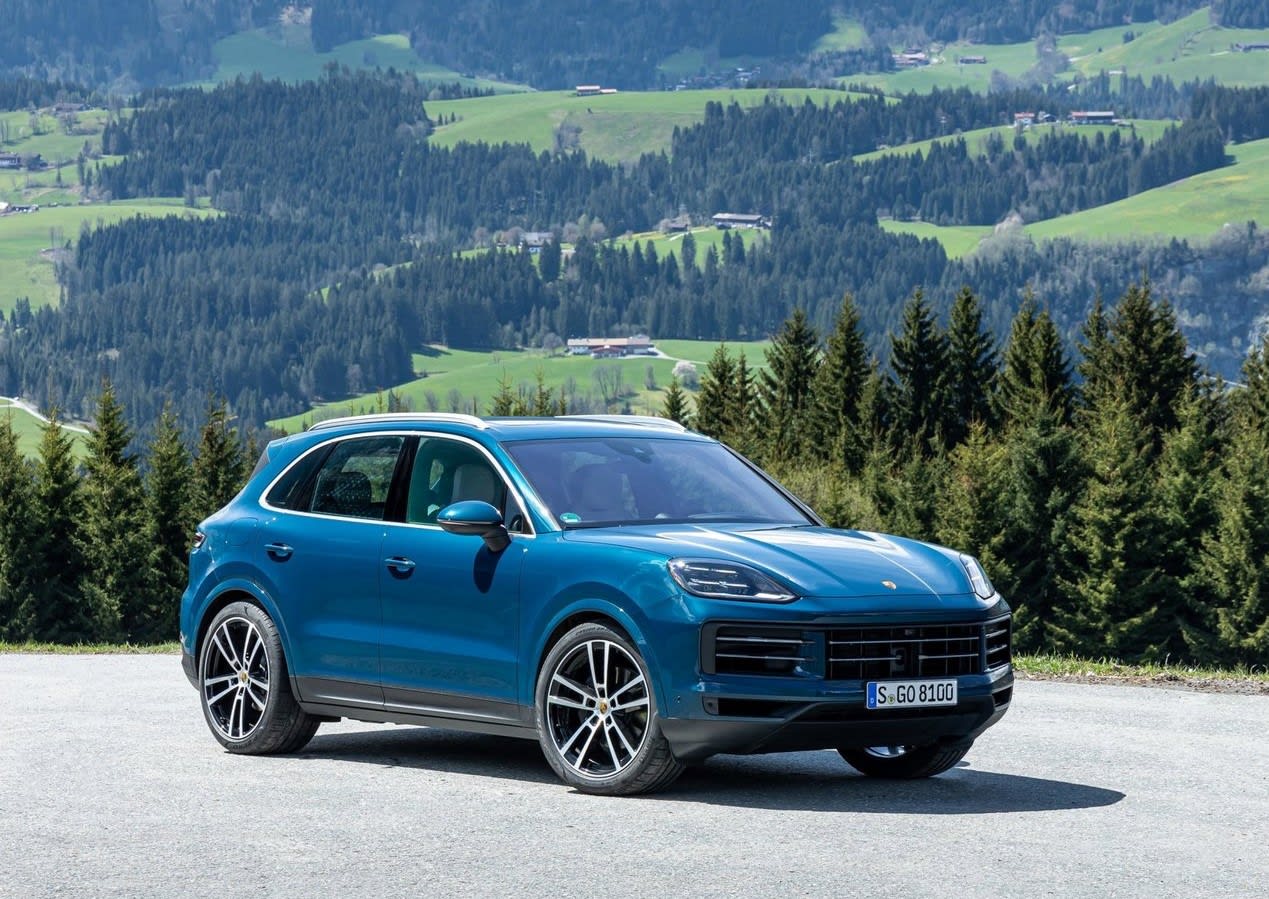
At a Glance
On the face of it, the new Cayenne doesn’t look all that different from its predecessor. But then you spot the new front wings, the altered bonnet and the revamped headlights, as well as the tweaked bumpers. It’s a very subtle change, but one that leaves the Cayenne feeling a little bit more modern than before. Not that it was aging badly in the first place.
The same goes for the interior, where Porsche has added technology from the Taycan electric saloon to good effect, and there’s a new optional passenger touchscreen, as well as a cleaner and more modern dashboard design. Naturally, the cabin quality is as flawless as ever, and it’s just as practical as it was before.
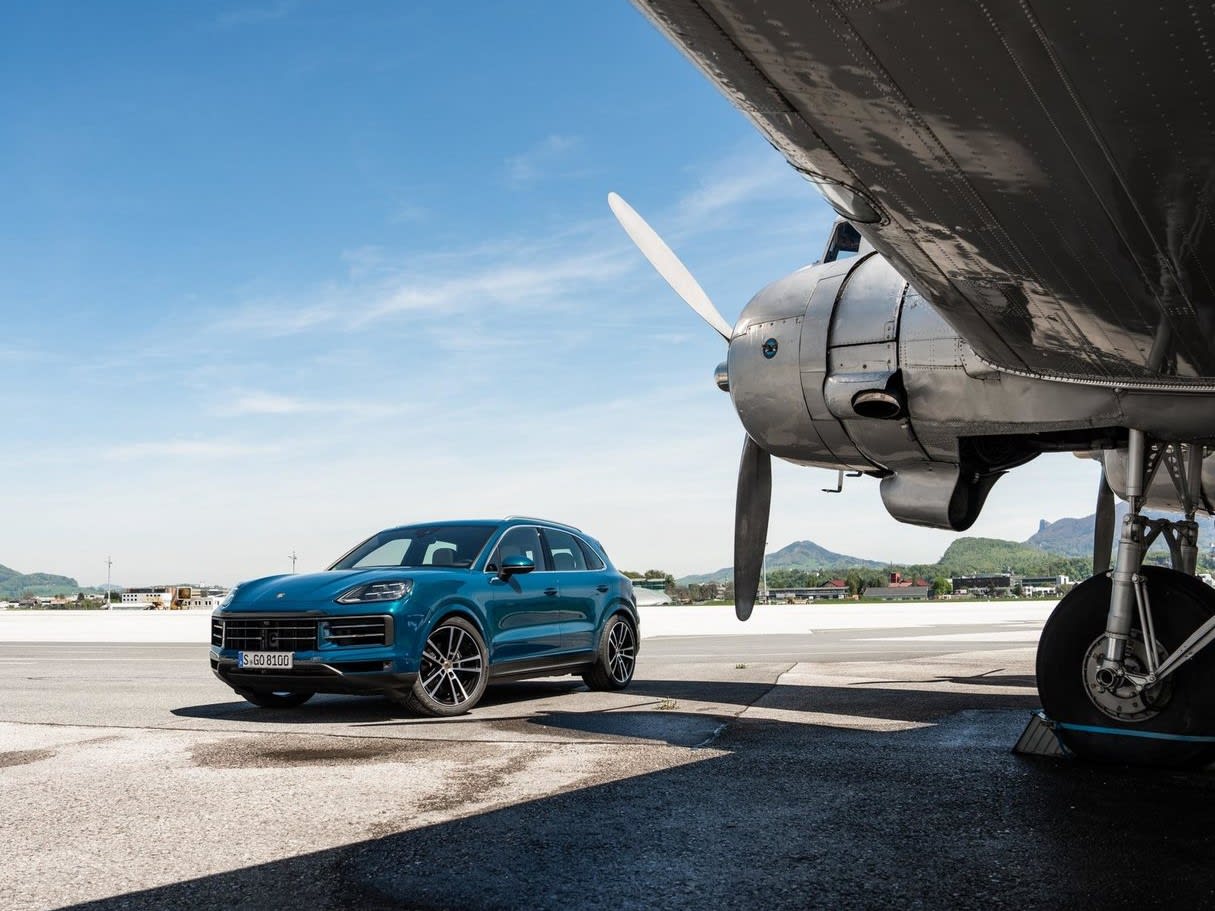
Porsche has tweaked the engine range, too, giving the Cayenne fresh hybrid systems with a little more power and more electric range. V8 petrol power is back for the S model, too, and high-performance GTS, Turbo and Turbo E-Hybrid models are also in the works, but there’s still no diesel option.
But despite all that, the Cayenne will largely sell on the basis of its performance on and off the road. Yes, it’s fast in a straight line, but the Cayenne also corners fantastically well and it rides gloriously, too. It’s easy to dismiss Porsche’s marketing guff about sports car DNA as baloney, but when you drive the Cayenne it somehow rings true. Yet if the snow falls or you want to head off-road, the Cayenne can still cope admirably.

Key Features
The Cayenne’s appeal has always been about the way it drives and the quality on show, both of which have remained unchanged since Porsche updated the car. The way it manages to deal with its bulk on the road makes it a joy to drive at any speed, but when you give it the beans you realize the sports car DNA is all present and correct. The luxury brand quality is there, too, with every button and every material feeling robust and substantial.
Now, though, Porsche has added a bit more modern technology to proceedings, giving the Cayenne a new all-digital instrument cluster, a new climate control system and an optional passenger infotainment display. The latter system is a bit of a gimmick, but the new hybrid systems have allowed the car to go a bit further on electrical power alone, and they’ve turned the E-Hybrid systems from a tax dodge into a really useful way of burning less fuel and achieving the same performance.

Range & Batteries
At launch, there’s just one hybrid version of the Cayenne, the E-Hybrid, and it now comes with a larger 25.9kWh battery, which is capable of taking the car well over 30 miles on a single charge, even in real-world conditions. Of course, other cars have been doing that for years, and the Range Rover Sport’s hybrid system is even more impressive, but this is a step forward for Porsche. And when the time comes, it’ll fit the E-Hybrid system to a more powerful version of the Cayenne, creating an ultra-high performance model with the ability to drive on electrical power alone for most journeys.

Performance & Drive
At launch, there are just three different versions of the Cayenne, but that is set to increase as time goes on. For now, though, you can choose whether you have the basic Cayenne, with its 3.0-litre V6 petrol engine and 353hp, or the E-Hybrid, which adds an electric motor and a rechargeable battery to take the total output to 470hp. Or, if you want an extra 4hp, you can have the 474hp Cayenne S with its thumping 4.0-litre V8 engine and no hint of hybrid assistance.
As you might expect from a Porsche, all three options provide plenty of performance. Even the base model gets from 0-62mph in six seconds flat, while the S cuts that to five seconds, and the E-Hybrid is similarly rapid.
The E-Hybrid is also the most economical option in the range, thanks to a plug-in hybrid system that allows it to drive on electrical power alone for longer than before. That’s partly down to a new electric motor, with significantly more power, which means the on-board computers are less likely to demand the help of the petrol engine when accelerating.
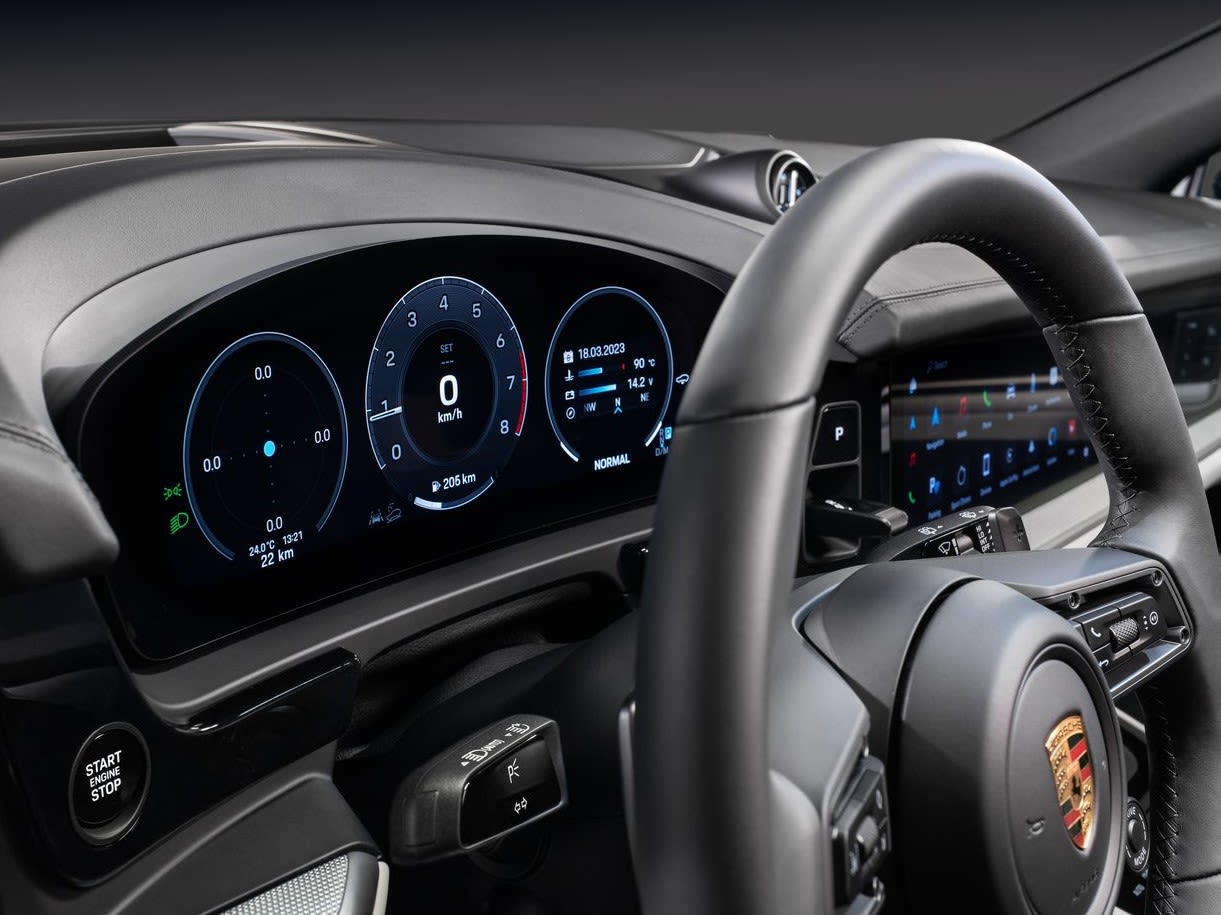
But efficiency is not really the Cayenne’s forte. This is an SUV with sports car DNA, and that shines through on the road. Every version drives brilliantly, particularly with the optional air suspension, which keeps the car level through corners and allows you to make the most of that trademark Porsche steering feel.
Yet it does all that while still offering impressive ride comfort. The Cayenne doesn’t exactly glide – the company still wants you to have a feel for what the wheels are up to – but it damps all that movement to ensure it never makes the car feel uncomfortable, even on scarred stretches of road. On a motorway, it’s little short of sublime.
Of course, the Cayenne prioritises road holding over all-terrain capability, but that doesn’t mean it won’t hold its own on the rough stuff. Stick a set of all-season tyres on those big rims, and it’ll deal with anything customers are likely to throw at it, only struggling with really severe terrain.

Charging
As is so often the way with plug-in hybrids, you’ll need to recharge the E-Hybrid’s battery regularly if you want to keep running costs in check. Charge it at home and you’ll be able to fill the battery overnight, assuming you install a 7kW domestic ‘wallbox’ charging unit. Use a conventional three-pin plug and it’ll take a little longer. Make sure you get the most out of every charge by reading through our guide to picking your ideal EV charger.
Running Costs & Emissions
If you want to keep running costs down, you’ll need one of the E-Hybrid Cayennes. With no diesel options around, they’re the only ones capable of more than 30mpg, and then only with a light touch and plenty of charging. But if you can keep most day-to-day journeys below 30 miles and charge regularly, you should see much more promising economy figures. It’s unlikely that most customers will ever get close to the claimed three-figure efficiency, though.
Of course, perhaps the biggest draw of the E-Hybrid is it’s low emissions and the resulting low company car tax rates. Naturally, it won’t be cheap per se - the Cayenne is still an expensive car - but it’s on a par with other plug-in luxury SUVs.
.jpg)
Interior & Technology
Porsche interiors are known for their quality and ergonomics, rather than their styling and tech, but Porsche is trying to turn that around. The new Cayenne is based on the same architecture as before, but it has a completely revamped dashboard with a greater focus on technology.
Key to that is the new digital instrument display, which has been lifted from the Taycan electric saloon. Using a digital screen in place of the old analogue rev counter, it has modernised the car significantly, although the new-look binnacle takes a little getting used to.
As does the new position of the gear selector, which is now a toggle switch on the dashboard. Again, it’s straight from the Taycan parts bin, but it has allowed Porsche to build an all-new climate control panel on the centre console. Again, it hasn’t revolutionised the way drivers interact with the car, but it does make it feel a little more modern.
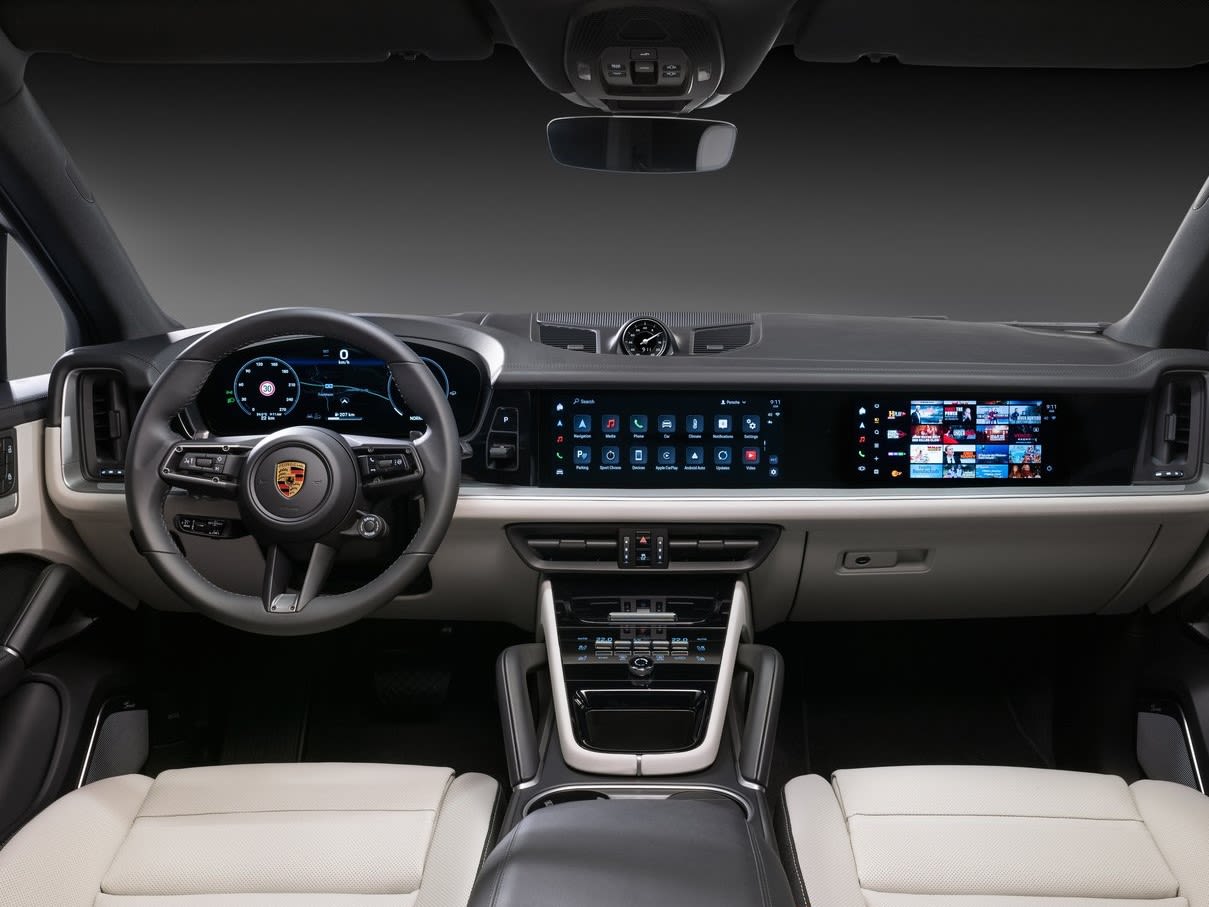
And the same goes for the touchscreen, which uses Porsche’s latest technology and comes with smartphone integration tech. Not that you really need it when the screen is this responsive and so logically laid out. It isn’t as fancy as some screens, but it’s one of the best in the business purely by dint of its ergonomic class.
For the first time, that screen is also available with a companion. For a small consideration, Porsche will fit a second passenger screen with the capacity to play video content and provide other functions not available to the driver. And because the police don’t like it if you watch The Sopranos while driving, there’s a film in the passenger screen that prevents the driver from seeing it.
Tech aside, though, the real appeal of the Cayenne’s interior is the quality. Porsche really knows how to build an interior, and every single part of the Cayenne’s cabin feels robust, solid and durable. Yet it still feels upmarket, in a strong and silent kind of way. There isn’t much shouting about how classy it is, it just lets its quality do the talking.

Practicality & Boot Space
Given the size of the Cayenne, it comes as no surprise to find plenty of space inside. The cabin is enormously spacious, seating four tall adults with ease, and giving them more than enough wriggle room to make long journeys a breeze. The headroom is ample, and legroom is really impressive. Even the middle seat is fit for human occupation, although we wouldn’t want to spend too long sitting there.
There’s no trade-off between luggage space and cabin space, either. The Cayenne’s boot measures almost 700 litres with all five seats in place, and that’s pretty good going in itself. The fact you get around 1,000 more litres of capacity when you fold the back seats down and fill the car to the rafters is even more impressive. But customers should be aware that opting for the E-Hybrid will impact that space negatively. In fact, the E-Hybrid’s boot is around 150 litres smaller than that of the standard car thanks to its battery and electric motor.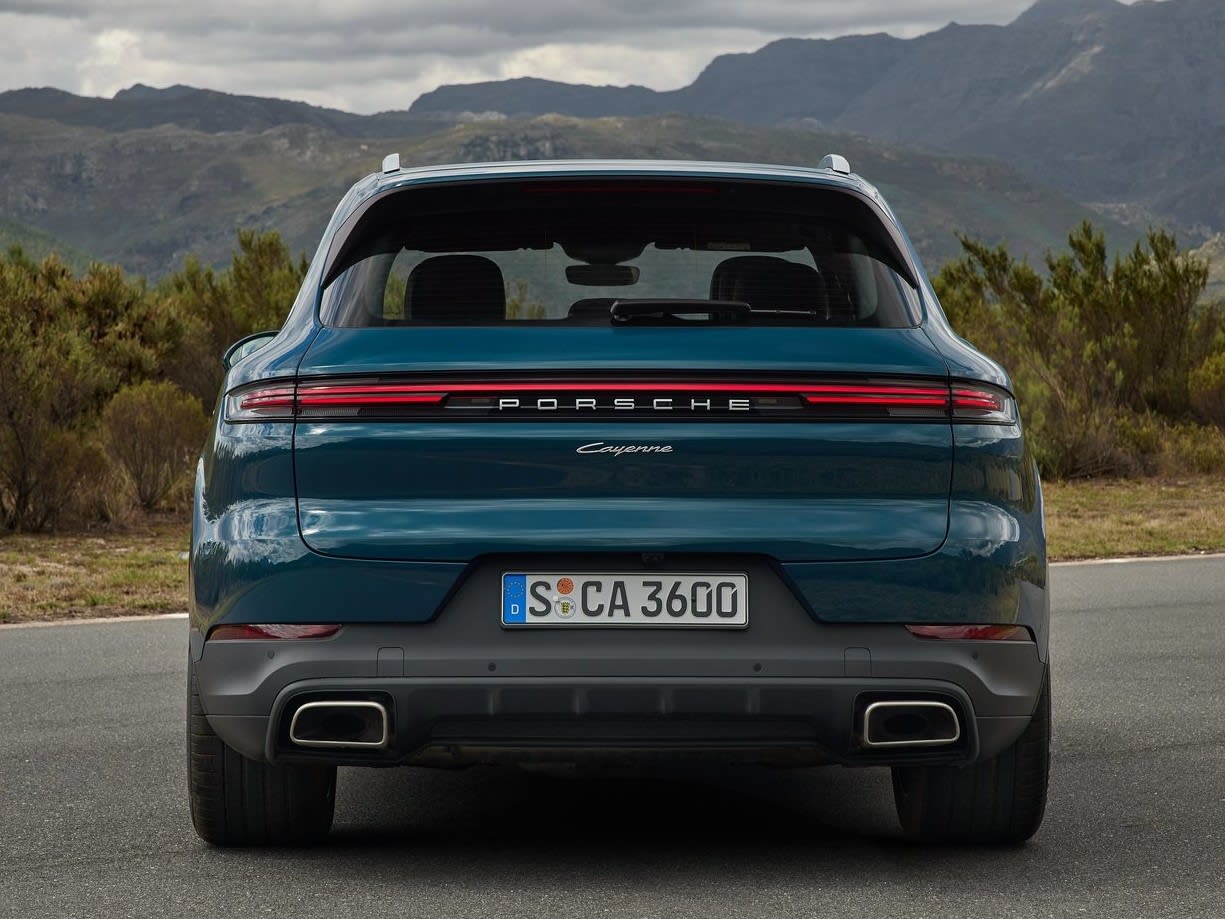
Safety
Because the new Cayenne is, structurally speaking, much the same as the previous car, we don’t expect Euro NCAP to change its safety rating. That means the new Cayenne will likely inherit the old model’s five-star safety rating, including the impressive 95% score for adult occupant protection. That was achieved on an older test, and the process has changed since then, but Porsche has tweaked the safety technology on offer, too.
The most obvious of these changes is to the headlights, where Porsche has fitted new LED Matrix lights as standard. That means the lights can recognise other road users and dip the main beam in their direction, preventing dazzle while maintaining maximum visibility for the driver. As an option, customers can also go for the HD LED Matrix lights, which tailor their output to the conditions, ‘highlighting’ a lane of the motorway, for example, or alerting the driver to the presence of a hazard such as a pedestrian.

Options
Although the Cayenne is already available in a range of specifications, and more are on the way, the standard equipment doesn’t vary all that much. Every car gets the usual features, including satellite navigation and the digital instrument display, as well as leather seats, climate control and electrically adjustable front seats with memory settings for the driver.
But this being Porsche, the options list is long, and it covers more than just paint colours and alloy wheel designs, although it’s worth mentioning them anyway, simply because they’re so numerous. You can pick from a massive range of colours, and if that isn’t enough, you can always go for a paint-to-sample option. That gives you pretty much any colour you want.
Further down the list, however, are the really important things. You can have heated rear seats, adaptive cruise control and soft-close doors, as well as features such as the Sport Chrono pack, which is standard on some versions. That system provides driving modes, which allow you to tune the car’s setup to the conditions, and it gives you a launch control system that improves performance off the line.
That’s one of our go-to options, along with the adaptive air suspension and Porsche’s dynamic chassis control kit, which allows you to tune the car’s suspension for handling or comfort, depending on your needs. The sports exhaust is worthwhile, too, making the most of the noise from those six- and eight-cylinder engines.

Rival Cars
Once upon a time, the Cayenne only had the BMW X5 and Range Rover Sport for company, especially when it came to luxury SUVs with a bit of handling prowess. But now the market is filled with big 4x4s from the likes of Mercedes-Benz, Aston Martin, Lamborghini, Ferrari, Maserati, Lexus and Land Rover, and some of those companies have more than one contender.
Of course, much of the attention will be lavished on the cars that, like the Cayenne, come from brands better known for supercars. The Ferrari Purosangue is a bit of an oddball, what with Ferrari’s insistence that it isn’t an SUV, but we all know the truth. And what an SUV it is. The same goes for the Lamborghini Urus, too, and the Aston Martin DBX. They’re all spectacular cars that manage to beat the laws of physics into submission.
Then you’ve got the usual premium suspects – the likes of the Range Rover and Land Rover Discovery, as well as the Mercedes-Benz GLE and the Audi Q7. They’re all comfortable and classy, but none of them can live with a Cayenne in the corners. Only the Audi can match it for quality, too.
Stiffer competition, therefore, comes from the BMW X5 and the Range Rover Sport. Both cars drive beautifully considering their size, and though they aren’t quite a match for the Cayenne on the road, the Range Rover Sport is the more capable 4x4. The truth is, though, that while the BMW has the class and the Range Rover is an all-rounder, they’re both more than capable of dealing with anything the average customer will throw at them. As is the Porsche. The only thing really in their favour is the availability of diesel engines alongside the petrol and hybrid options.
Verdict & Next Steps
The Porsche Cayenne has long been the king of the luxury SUVs – particularly for those who value road-going prowess ahead of off-road capability – but it’s a peerless all-rounder. It may not quite have the style of the latest Range Rover Sport, but with fabulous build quality, brilliant engines and the latest Porsche technology on board, the Cayenne is as strong as it has ever been. And that’s a bit like saying the Australian cricket team is as strong as it has ever been. It just means nothing – bar nothing – can possibly hope to beat it.
Where to next?
View latest Porsche Cayenne deals - from just £903.60 per month inc VAT**.
Call us on 0118 3048 688 or hit the green 'Enquire' button for more details.
Looking for a great leasing deal? Check out our incredible range of car lease deals.
New SUV? Read our latest Car Reviews and find the right model for you.
Want to know more about leasing? Take a look at our comprehensive Leasing Guides.
Interested in everything motoring? Why not catch up on all the latest Car Leasing News.
**Score based on Select’s unique meta score analysis, taking into account the UK’s top leading independent car website reviews of the Porsche Cayenne
**Correct as of 01/08/2023. Based on 9 months initial payment, 5,000 miles over a 48 month lease. Initial payment equivalent to 9 monthly payments or £8,132.40 (Plus admin fee) Ts and Cs apply. Credit is subject to status.
